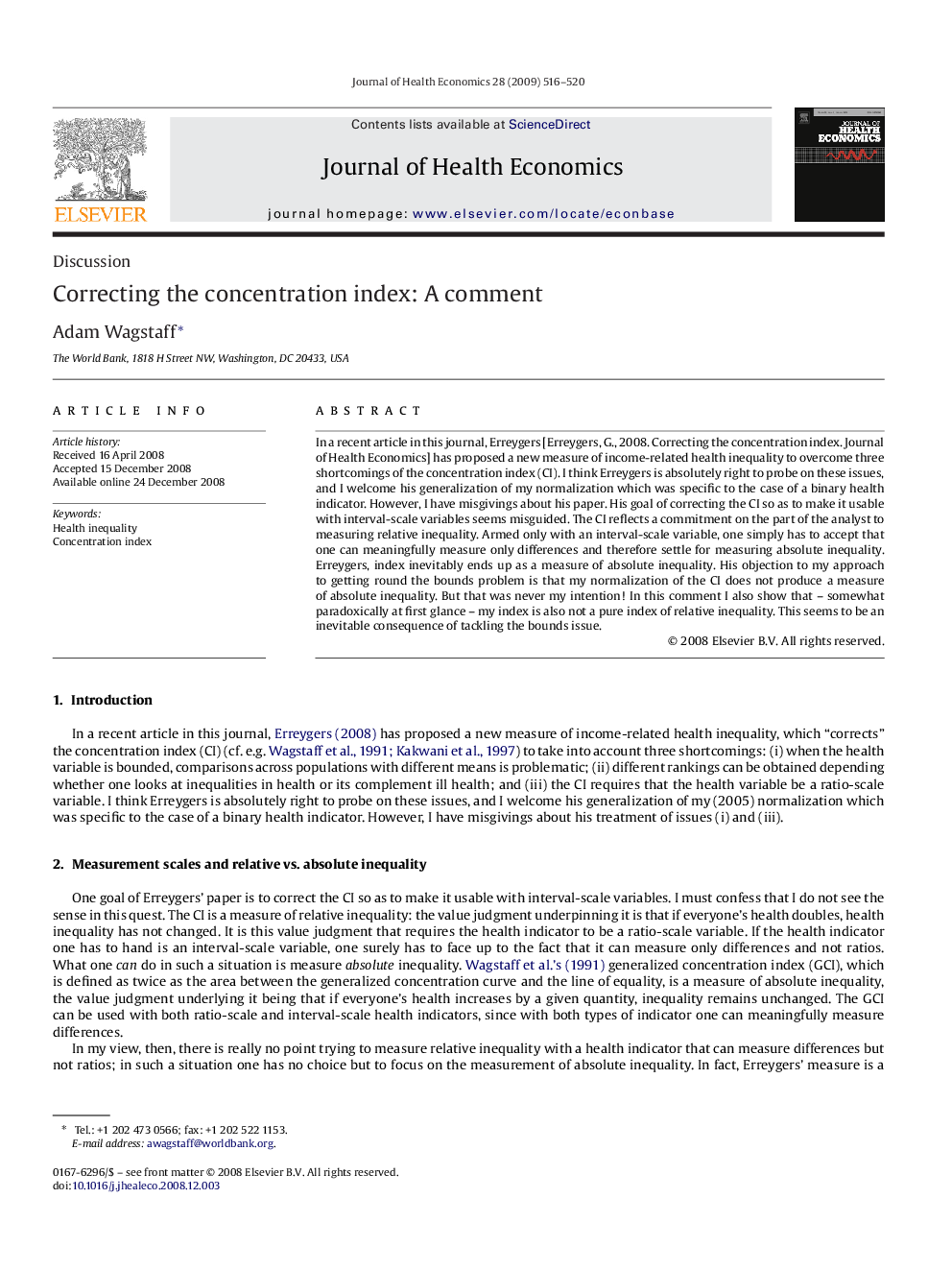| Article ID | Journal | Published Year | Pages | File Type |
|---|---|---|---|---|
| 962008 | Journal of Health Economics | 2009 | 5 Pages |
Abstract
In a recent article in this journal, Erreygers [Erreygers, G., 2008. Correcting the concentration index. Journal of Health Economics] has proposed a new measure of income-related health inequality to overcome three shortcomings of the concentration index (CI). I think Erreygers is absolutely right to probe on these issues, and I welcome his generalization of my normalization which was specific to the case of a binary health indicator. However, I have misgivings about his paper. His goal of correcting the CI so as to make it usable with interval-scale variables seems misguided. The CI reflects a commitment on the part of the analyst to measuring relative inequality. Armed only with an interval-scale variable, one simply has to accept that one can meaningfully measure only differences and therefore settle for measuring absolute inequality. Erreygers, index inevitably ends up as a measure of absolute inequality. His objection to my approach to getting round the bounds problem is that my normalization of the CI does not produce a measure of absolute inequality. But that was never my intention! In this comment I also show that - somewhat paradoxically at first glance - my index is also not a pure index of relative inequality. This seems to be an inevitable consequence of tackling the bounds issue.
Keywords
Related Topics
Health Sciences
Medicine and Dentistry
Public Health and Health Policy
Authors
Adam Wagstaff,
